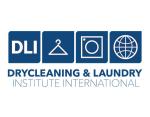CHICAGO — It’s difficult to ignore the attention being paid to AI (artificial intelligence) in the media these days. It seems almost every day a publication or network news show dedicates coverage to this topic. While many academics and technologists deliver their research, thoughts, ideas and predictions on the future of AI, the next-generation AGI (artificial general intelligence) and beyond, this tool is in widespread use in almost everyone’s life — whether they know it or not.
While the early adapters of this technology are the largest corporations using AI for speech recognition, customer service, vision recognition, marketing and stock trading, among many others, I wondered what the future of AI might look like in the laundry industry.
Having read several books on the subject yet not knowing where to start, I sat down at my desktop computer and navigated to ChatGPT, an AI chatbot released to the public less than a year ago, to help me organize my thoughts on this topic.
I asked ChatGPT, “How will AI affect the drycleaning industry in the future” and it gave me no less than 10 points for my consideration. One thing I thought was interesting is that it prefaced its points of interest with a disclaimer that its data was last updated in September 2021, which is a lifetime ago in AI terms.
Following are the general points of consideration it gave me, along with my musings for possible-use cases for cleaners in the future.
Economizing Operations and Reducing Environmental Impacts
AI-enabled laundry equipment will monitor the entire process and adjust energy, water consumption and supply additions based on load size, fabric and soil levels without the need for human intervention. Operators utilizing this technology would have an advantage over operators not using it in terms of cost, but also in terms of “environmentally friendly” bragging rights.
Improved Quality and Fabric Life
AI-powered systems will help sort and classify different types of laundry items for the most efficient use of machinery and manpower. An AI-enabled system will analyze the fabrics being processed and adjust cycle length and mechanical action as well as chemical additives, water levels and temperatures to produce the best possible product while reducing the cost of that processing. These adjustments will extend the life span of the textiles and help prevent damage. Post-process visual inspection by AI will improve the quality of the finished product and increase customer satisfaction while reducing the need for human participation and cost in this important part of the process.
Predictive Maintenance
Anyone who has seen the movie 2001: A Space Odyssey will remember the AI-capable computer named “HAL 9000,” which predicts the failure of an external component on the spaceship and sends the one awake astronaut out to repair it before it fails. AI will enable this type of predictive maintenance on laundry equipment, order the replacement parts and schedule time from human or robotic service staff to make the repairs before costly downtime is encountered. This predictive maintenance will not only allow operations to stay on track for product delivery but will also prolong the useful life of the equipment.
Come back Thursday for the conclusion of this series, where we’ll continue the exploration of AI’s possible role for dry cleaners in the future.
Have a question or comment? E-mail our editor Dave Davis at [email protected].













